
Cactus Around Las Vegas, Vegetation Around Las Vegas
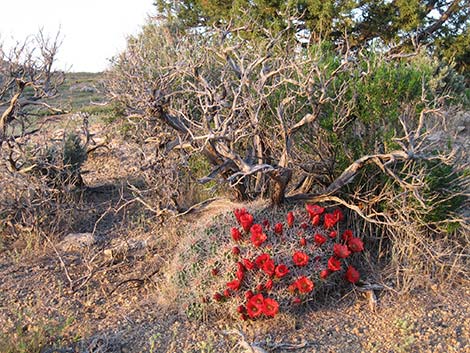 |
General: Mojave Kingcup Cactus (Echinocereus mojavensis), also called Mojave Claret Cup, is mound-shaped plant formed of many, densely packed stems to about 1-foot tall and densely covered with gray, twisted and interlocking spines. The spines are round rather than angled spines. Mojave Kingcup Cactus is a fairly common component of vegetation communities on well-drained gravelly and rocky soils on upper bajadas and slopes into the mountains in the Upper Sonoran (Pinyon-Juniper Woodland), Transition (Yellow Pine Forest), and Canadian (Pine-Fir Forest) life zones. Around Las Vegas, Kingcup Cactus can be found most easily in the Pinyon-Juniper woodlands on Mt. Charleston and in the Mojave National Preserve. Family: Cactus (Cactaceae). Other Names: Claret Cup Cactus, Echinocereus triglochidiatus. |
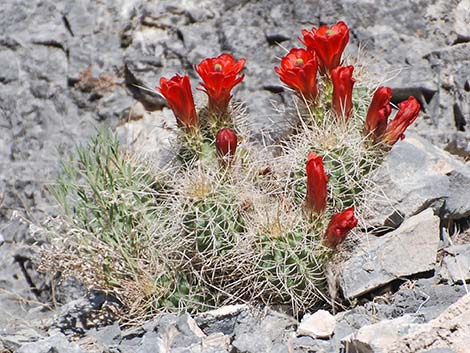 |
Plant Form: Mound-shaped plant formed of many, densely packed stems. Height: Usually to about 1-foot tall, to 16 inches. Trunk: None. Stems: Entire, cylindrical; mound composed of up to about 500 individual stems, each usually less than about 2 inches diameter, bluish green. Stem Surface: Ribbed, about 10 ribs per stem. Spines: Gray, round, to about 2-inches long, curved (almost wavy) and twisting, often interlocking with those of neighboring stems to form a dense web of spines covering the mound. Central and radial spines difficult to distinguish. |
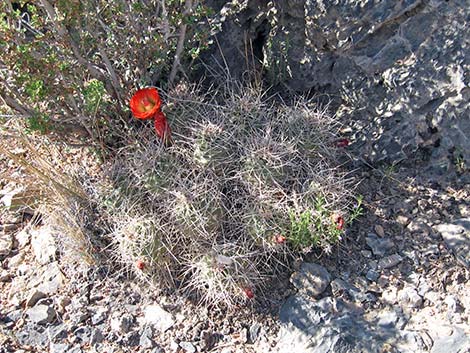 |
Glochids: Absent. Flowers: Blooms during spring (early for cactus). Inflorescence: Solitary flowers emerge from near the tip of individual stems. Flowers: funnel-shaped; orange to red, to about 3-1/2-inches diameter. Fruit: Cylindrical, about 1-inch long, 1/2-inch diameter. Reddish when ripe, spines deciduous. Seeds: Habitat: Dry, well-drained gravelly and rocky soils on upper bajadas and moderate slopes into the mountains. Distribution: Southern California to Colorado, and south through Texas into Mexico. Elevation: About 5,000 feet to 10,000 feet. Comments: Baker Kingcup Cactus recently was split from this species. |
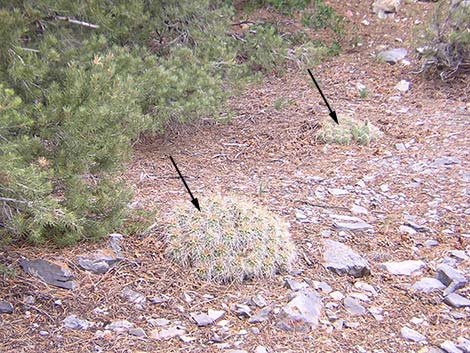 Mojave Kingcup Cactus on Mt. Charleston |
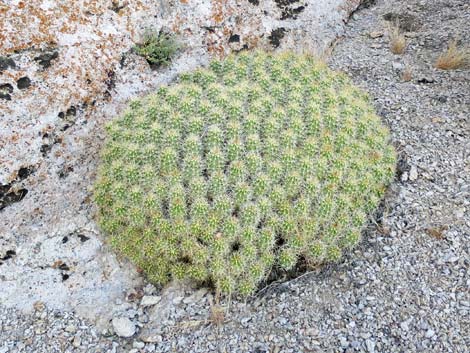 A big one in Basin and Range National Monument |
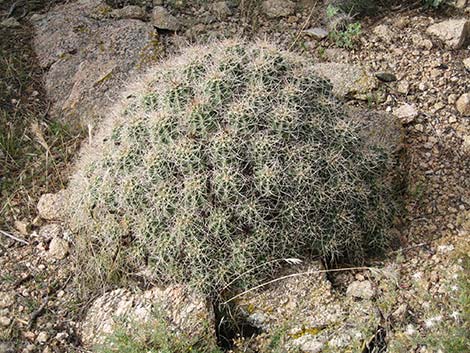 Very large Mojave Kingcup Cactus |
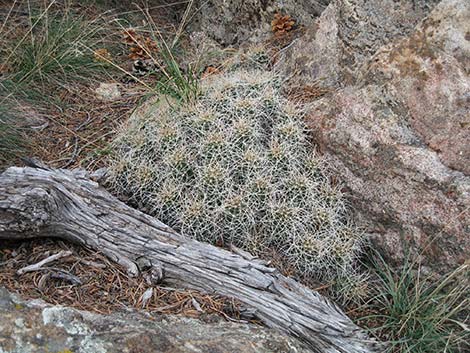 Typical growth form shows many individual stems |
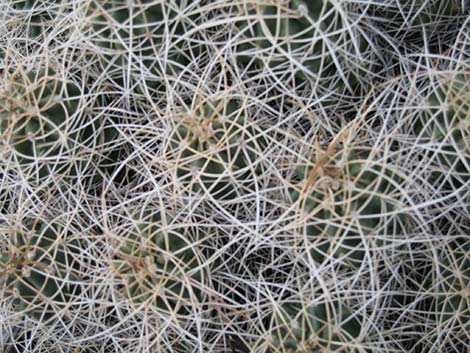 Curved, interlocking spines on a Mojave Kingcup Cactus |
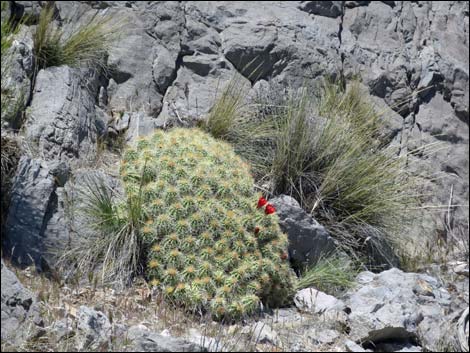 Gass Peak, Desert NWR |
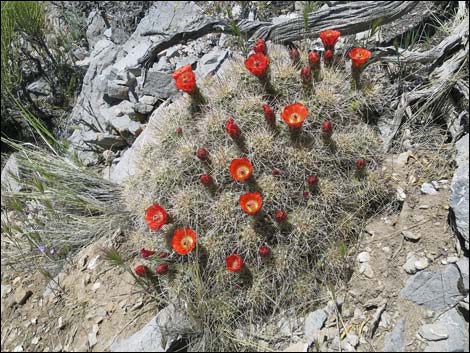 Gass Peak, Desert NWR |
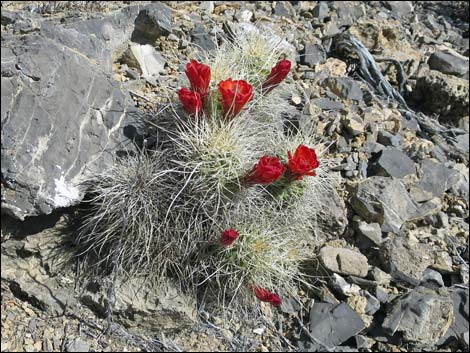 Basin and Range National Monument |
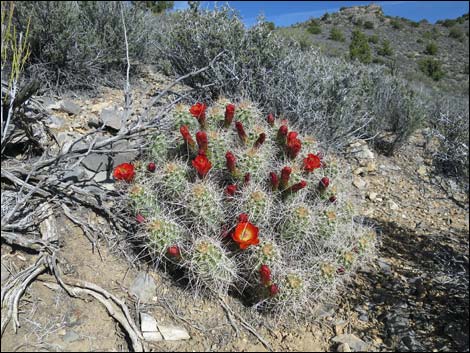 Basin and Range National Monument |
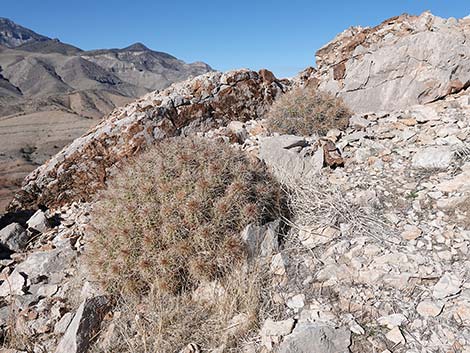 Plants suffering from drought during 2022; Red Rock Canyon |
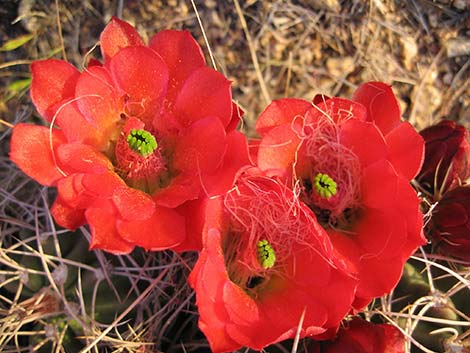 Mojave Kingcup Cactus flowers |
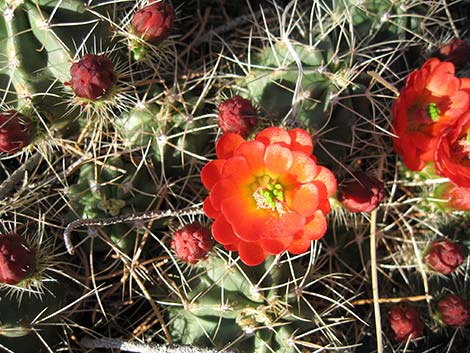 Mojave Kingcup Cactus flowers |
Note: All distances, elevations, and other facts are approximate. Names generally follow the USDA database.
![]() ; Last updated 220126
; Last updated 220126
| All Cactus | Plant Species Index | Glossary | Copyright, Conditions, Disclaimer | Home |